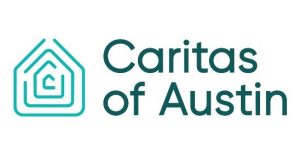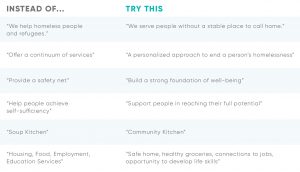Taking Practical Steps to Sustainable Implementation
March 8, 2018Returning this newsletter to the Resolve to Reframe themes we committed to examining in more depth, this week we’re addressing Sustainable Implementation – specific actions organizations can take to fully integrate the reframing approach into their communications as a whole, as well as maintaining consistent practice into the future. While we recently focused on the foundational content of your organization’s external communications (e.g., mission statements) in Getting Started, here we’ll offer practical steps to institutionalize the Building Well-Being Narrative in your organization’s internal communications strategy.

Set Up a Standard, Comprehensive Structure
Ensuring that reframing is part of your organization’s overall communications objectives, strategies, and messages means weaving the approach into the fabric of your organization, making it automatic, turn key, and easier to adopt for staff already strapped for time. In contrast to reframing specific language and content, as we did with Getting Started, sustainable implementation establishes reframing as the lens through which to make communications, development, and policy decisions across the organization. It allows you to comprehensively incorporate reframing – creating a common platform to continue forward momentum and establish lasting change, which in turn saves you time and effort in the future by standardizing approaches and processes to avoid reinventing the wheel.
Integrate Uniform Protocols Across Internal Guides
Similar to Getting Started techniques, we recommend identifying the key internal policy documents which articulate broad principles to inform messaging and set the standards to guide external communications decisions. This content includes filters such as: branding, social media, and media relations guidelines; public policy procedures/platforms; development strategic plans; and staff/board orientation/onboarding. Ask the same questions and apply the same recommendations from Getting Started to these documents as you did for your organization’s foundational external communications.
Take a Cue from Other Reframers
Below are some examples of partner organizations’ successes with institutionalizing reframing throughout their communications strategies and content:
Brand Guidelines. Caritas of Austin built reframing recommendations into all elements of its Brand Guidelines (e.g., elevator pitch, talking points). Especially noteworthy are:
- Its application of reframing to its logo (to right), explaining that the icon “layers, like the layers of services that Caritas of Austin provides, represent a sturdy foundation of well-being that can withstand life’s unexpected storms. The deliberately unbroken bottom stroke of each layer is crucial for that strong foundation.”
- “Instead of… Try This” Messaging suggestions, providing concrete examples of translating old messages into reframed ones (below).

Public Policy Platforms. The Alliance for Strong Families and Communities embeds the Building Well-Being Narrative into its Public Policy Platform and Federal Public Policy Agenda (discussed in a previous newsletter). Through the reframing prism, “A Blueprint for Strong Families and Communities” establishes the framework that will guide the network’s policy decisions at all government levels, and “The Federal Public Policy Agenda” identifies its national policy priorities.
Public Policy Guidelines. The National Human Services Assembly’s Public Policy Guidelines & Procedures includes among its conditions for deciding to take an “official policy position by joining a sign-on letter, joint statement, action campaign, coalition” that it “evaluates the extent to which the piece applies the Building Well-Being Narrative.”
If you have implementation questions, please email them to Bridget Gavaghan, Director of the National Reframing Initiative. In addition, please share with us strategies that work for your organization so that we can compile a list of best practices to benefit your peers across the network.

